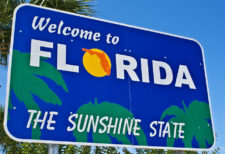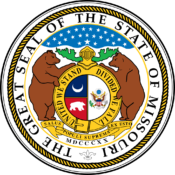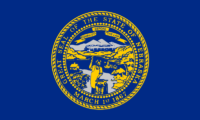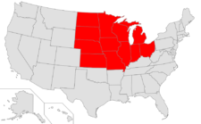 As we previously reported, the new Florida public notice statute set to take affect on Jan. 1 is beset with ambiguity. In general, the statute is designed to give local governments the option to publish notices on their county website in lieu of newspapers. But as the dust has settled from the battle over House Bill 7049, fears about the immediate damage it will wreak on public notice in the state have diminished.
As we previously reported, the new Florida public notice statute set to take affect on Jan. 1 is beset with ambiguity. In general, the statute is designed to give local governments the option to publish notices on their county website in lieu of newspapers. But as the dust has settled from the battle over House Bill 7049, fears about the immediate damage it will wreak on public notice in the state have diminished.
A survey of statewide public notice websites
 Statewide public notice websites sponsored by the newspaper industry have been the focus of major change in the last few years. Many states enacted new laws requiring notices to be published on the sites and about two dozen state press groups have switched website vendors.
Statewide public notice websites sponsored by the newspaper industry have been the focus of major change in the last few years. Many states enacted new laws requiring notices to be published on the sites and about two dozen state press groups have switched website vendors.
The vendor shift has been driven by the growing adoption of online ad-entry systems and the withdrawal from the market of the first vendor to license a web-based platform to power the websites.
How not to defend public notice
 Custer County isn’t the only jurisdiction in Colorado where controversy has erupted over the publication of local notices. Greenwood Village and Pitkin County have had their own recent dust-ups over the designation of their local papers of record. The Pitkin County story is particularly instructive for the wrong reasons.
Custer County isn’t the only jurisdiction in Colorado where controversy has erupted over the publication of local notices. Greenwood Village and Pitkin County have had their own recent dust-ups over the designation of their local papers of record. The Pitkin County story is particularly instructive for the wrong reasons.
In late July, Pitkin’s Board of County Commissioners (BOCC) adopted the Aspen Daily News as its new official newspaper, displacing the Aspen Times, a daily that had served as the ski town’s paper of record since 1993. The Times had changed ownership at the beginning of the year, igniting several local controversies that apparently motivated the commissioners to make the change.
Colorado paper files slam-dunk lawsuit over lost notices
 The Wet Mountain Tribune filed a federal lawsuit last month accusing the local Board of County Commissioners (BOCC) of punishing it by awarding Custer County’s public notice contract to another newspaper. The lawsuit alleges the BOCC violated the Tribune’s First Amendment rights by retaliating against it for reporting factual matters the Board would have preferred to keep hidden.
The Wet Mountain Tribune filed a federal lawsuit last month accusing the local Board of County Commissioners (BOCC) of punishing it by awarding Custer County’s public notice contract to another newspaper. The lawsuit alleges the BOCC violated the Tribune’s First Amendment rights by retaliating against it for reporting factual matters the Board would have preferred to keep hidden.
The paper appears to have a very strong case.
Public notice award winners announced
 Did you know some local governments in drought-ridden areas “seed” their clouds to increase precipitation? Many in Northern New Mexico were mystified on Nov. 4, 2021, when they read a public notice in the Taos News about an application filed with a state water commission for such a “weather control and precipitation enhancement” project that was to set to begin the following month.
Did you know some local governments in drought-ridden areas “seed” their clouds to increase precipitation? Many in Northern New Mexico were mystified on Nov. 4, 2021, when they read a public notice in the Taos News about an application filed with a state water commission for such a “weather control and precipitation enhancement” project that was to set to begin the following month.
News coverage of the notice and the local controversy it spawned earned the Taos News and veteran editor and reporter Rick Romancito first-place in this year’s Michael Kramer Public Notice Journalism Award competition. Sam Galski of the Standard-Speaker in Hazleton, Pa., won second-place. Two North Dakota papers — The Bismarck Tribune and 2020 public notice award winner The (Crosby) Journal — tied for third.
A weird but benign session in Missouri
 “I’ve been doing advocacy work in the state legislature for 40 years and this was probably the weirdest session I’ve ever experienced,” says Doug Crews, lobbyist and former executive director of the Missouri Press Association (MPA), where he worked for 36 years.
“I’ve been doing advocacy work in the state legislature for 40 years and this was probably the weirdest session I’ve ever experienced,” says Doug Crews, lobbyist and former executive director of the Missouri Press Association (MPA), where he worked for 36 years.
Two related factors made the 2022 session in Jefferson City unusual, according to Crews, who now contracts with Lathrop GPM Consulting, the firm that represents MPA. About half the session was dominated by Senate debate over a redistricting map for Missouri’s eight U.S. Congressional districts. And with the Senate Republican majority split into two caucuses — one ultra-conservative and the other more moderate — functionally speaking there are now three ideologically distinct parties in the state Senate.
PNRC creates ads promoting public notice
 PNRC has created a suite of print and web ads publicizing public notice. That’s one of the ads on the left.
PNRC has created a suite of print and web ads publicizing public notice. That’s one of the ads on the left.
The ad campaign promotes public notice advertising as vital local content that is available in newspapers and on newspaper websites.
The website aspect is crucial. While most readers are at least vaguely aware that government notices are published in newspapers, far fewer know they’re also posted on newspaper websites. The ad campaign, which includes banner ads and other formats suitable for the web or print, is designed to address that lack of awareness.
Two more states pass web-posting bills
Two more midwestern states passed laws last month requiring newspapers to post notices on their press association’s statewide public notice website. With Minnesota and Michigan joining South Dakota and Nebraska, four states in the region have now passed web-posting laws this year.
In total, eighteen states now have web-posting statutes on the books.
The new law in Minnesota requires newspapers to publish their notices on the Minnesota Newspaper Association’s statewide public notice website and to include an index link to the public notice section on their own websites. (Current law in Minnesota already requires newspapers to post notices on their website; the new law adds the index-link requirement and forbids the notices from being posted behind a paywall.)
PNRC: Newspapers must post notices on the web
 One of the most important steps newspaper publishers can take to ensure newspapers continue to remain the exclusive vehicle for public notice is to expand the audience for those notices by posting them on their own website and on their state press associations’ statewide public notice website.
One of the most important steps newspaper publishers can take to ensure newspapers continue to remain the exclusive vehicle for public notice is to expand the audience for those notices by posting them on their own website and on their state press associations’ statewide public notice website.
Just ask Nebraska Press Association Executive Director Dennis Derossett, who says that having a statewide website where members can post their notices — and supporting a law requiring them to do so — helped NPA convince lawmakers to increase the rates paid for those notices (see story below).
Nebraska modernizes public notice law
 Nebraska became the second midwestern state to update its public notice law in 2022 when Gov. Pete Ricketts (R) signed Legislative Bill 840 on April 18.
Nebraska became the second midwestern state to update its public notice law in 2022 when Gov. Pete Ricketts (R) signed Legislative Bill 840 on April 18.
LB-840 requires newspapers to post notices on the Nebraska Press Association’s statewide website. It also raises public notice ad rates from 45 cents per line to 48 cents per line for 12 months beginning Oct. 1, 2022, and to 50 cents per line on Oct. 1, 2023. That 11 percent boost over the next 18 months is the state’s first public notice rate increase in 26 years.

